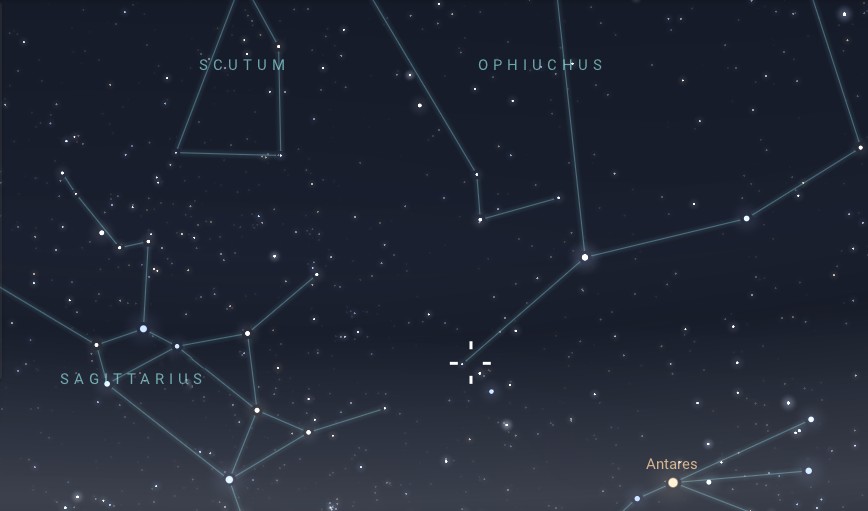NGC 6369, also known as the Little Ghost Nebula, is a planetary nebula located in the constellation Ophiuchus, approximately 2,000 to 3,500 light-years from Earth. Planetary nebulae are formed when a dying star sheds its outer layers, creating a shell of ionized gas and dust. This process marks the late stages of stellar evolution for stars similar to our Sun.
Discovered by the German-born British astronomer William Herschel in 1784, NGC 6369 has since intrigued astronomers with its unique characteristics. Here’s some information about this fascinating astronomical object:
Physical Characteristics
At the centre of NGC 6369 lies a dying star known as a white dwarf. This star is the remnant of the original star that has shed its outer layers to form the nebula. The central star, which is nearing the end of its life cycle, continues to emit intense radiation, causing the surrounding gas to glow.
The nebula has an irregular shape with faint outer regions and a brighter, more defined central region. The central star is visible within the nebula, surrounded by the glowing gas and dust expelled during its final stages of evolution. Its complex morphology reflects the dynamic processes at play during its formation.
The Little Ghost Nebula exhibits a bluish-green coloration, characteristic of many planetary nebulae, produced by the emission of light from ionized oxygen and hydrogen atoms in the nebula. This striking colour is a result of the star’s intense ultraviolet radiation ionizing the surrounding gas, creating a vivid display that can be appreciated through telescopes.
Evolutionary Stage
NGC 6369 represents a relatively advanced stage in the evolution of a star similar to our Sun. The central star has exhausted its nuclear fuel and shed its outer layers, exposing its hot core as a white dwarf. The expelled gas and dust form the visible nebula, which will gradually disperse over time.
The nebula is of significant interest to astronomers studying stellar evolution and the dynamics of planetary nebulae. Its irregular shape and central star provide valuable insights into the processes that shape the morphology of planetary nebulae and the interactions between the central star and its surrounding environment. Understanding these processes helps scientists piece together the lifecycle of stars and the eventual fate of solar systems.
Observation
The apparent magnitude of the Little Ghost Nebula typically falls within the range of 12 to 13, indicating that it is relatively faint and requires a moderate to large telescope to observe, particularly due to its relatively small size. Observers equipped with telescopes will be able to discern its structure and coloration, though it may still be challenging to spot in light-polluted areas.

The nebula is situated in the constellation Ophiuchus, which is more prominent in the southern sky. For observers in the Southern Hemisphere, it is better seen from latitudes closer to the equator. Its visibility may vary depending on the observer’s exact location and the time of year, but generally, it can be observed during summer and autumn, roughly from November to April.
To maximize the chances of seeing NGC 6369, it’s essential to consider local conditions, such as light pollution, atmospheric clarity, and the presence of the Moon. Consulting a detailed star chart or astronomy app can help determine the best times to observe the nebula from your specific location.



